2024 Pivot Phoenix
Wheel Size: 29’’ front / 27.5’’ rear
Suspension Travel:
- Frame travel: 210 mm
- Fork travel: 200/203 mm
Geometry Highlights:
- Sizes offered: S1, S2, S3, S4
- Headtube angle: 62.9° (High), 62.5° (Low)
- Reach (size S3): 485 mm (High), 480 mm (Low)
- Chainstay length: 440 mm (High), 443 mm (Low)
Frame Material: Carbon fiber
Price:
- Complete bikes starting at $6,899 (build details below)
- Frame kit: $4,799
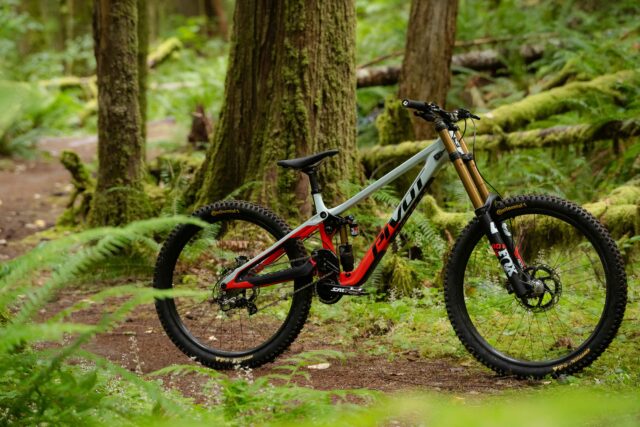
Intro
The prototype DH bike that Pivot Factory Racing’s athletes have been riding since last season has drawn a lot of attention — largely due to its machined lug and carbon tube construction, and the wild dual-chain, high-pivot, six-bar suspension layout.
Now, the production version of the new Phoenix is here. It has a more conventional carbon fiber build but the same out-there suspension layout. Pivot is clear that the Phoenix is meant to be a no-holds-barred DH race bike, but how have they gone about building one? Let’s have a look.
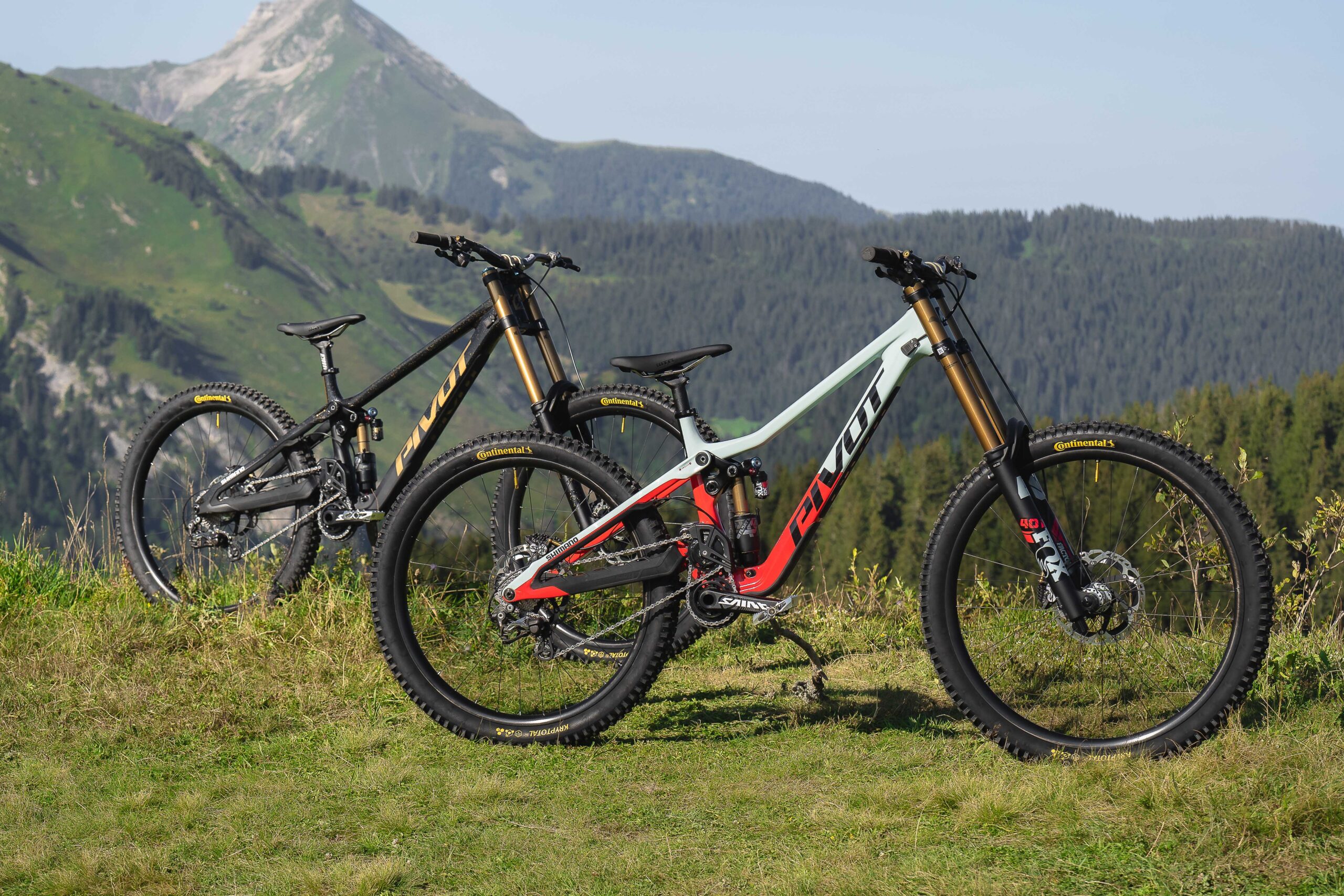
The Frame
The prototype version of the new Phoenix used machined aluminum lugs with carbon fiber tubes bonded to them to make it easier to test different configurations and refine the geometry and suspension kinematics. Pivot said from the onset that the production version would use more conventional construction, though. While the lugged design was great for making tweaks and testing them, it was much too complicated and expensive to produce at scale. They’ve kept to their word, and the new Phoenix does indeed get a more typical-looking full carbon frame.

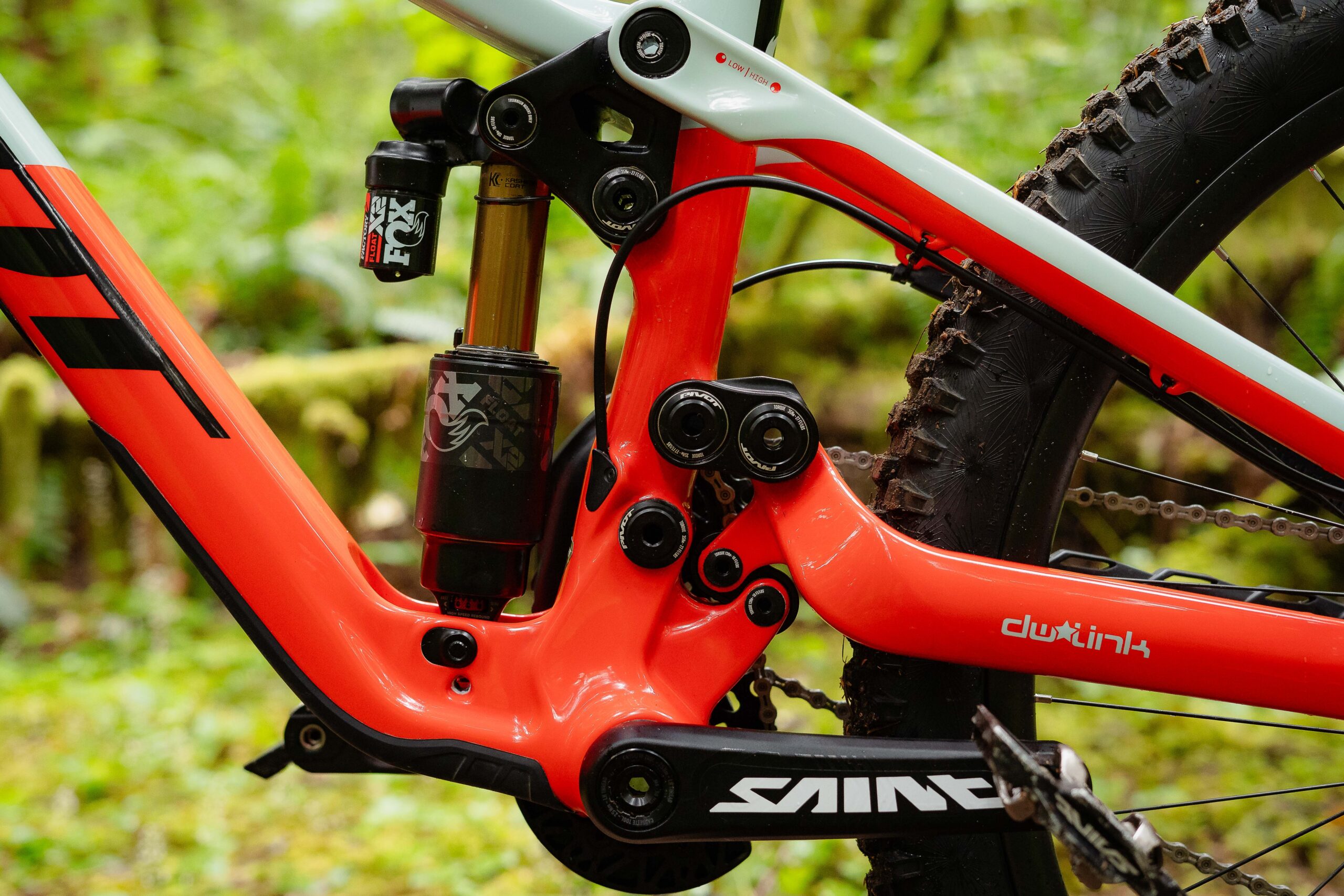

This layout, while a bit more complex, has a few advantages. For one thing, there’s much better chain wrap around both the chainring and the idler pulleys than there is on most high-pivot bikes, which should help with chain retention and drivetrain wear. By using two different size idler pulleys, Pivot is also able to increase the gearing through the idlers, and in turn, run a smaller chainring for more ground clearance. The Phoenix uses a 27-tooth chainring as standard, but by running a smaller idler on the input side (the one tied to the crank) and a larger one on the output (the chain that goes to the rear wheel), Pivot is able to produce the equivalent of a 37-tooth chainring in terms of the final gearing. The idler pulley mount is slightly eccentric to allow the lower chain to be tensioned; the derailleur handles things for the second chain as usual.
The Phoenix also uses a flex pivot in the rear triangle, in contrast to Atherton’s implementation of the DW6 suspension layout. Three rocker links define the six-bar layout; in the Phoenix’s case, there are two counter-rotating ones behind the bottom bracket / idler pulley area, and a more conventional one that drives the shock from above. A slight bit of flex between the chainstays and seatstays replaces the dropout pivot on most other six-bar bikes, such as the Atherton A200 or Commencal Supreme.
Pivot has used that six-bar layout to do some interesting things with the bike’s suspension kinematics. In keeping with Pivot’s description of the Phoenix as a “mid-high-pivot” bike, the axle path is substantially rearward but not wildly so, reaching about 22 mm of chainstay growth at ~135 mm of travel before coming back forward up to the 210 mm maximum travel. The anti-squat curve is very flat at about 120% until about halfway through the travel, where it falls off sharply, and the anti-rise curve is very flat and notably high, at just under 120%.
A flip chip at the lower shock mount toggles between two leverage curves, both of which are very progressive, in mostly straight lines. The lower-progression option is still almost 40% progressive; the higher-progression one bumps that up to 46.6%. Pivot says that the latter is tailored specifically to Bernard Kerr’s preferences, while the lower progression option “suits most mortals.”
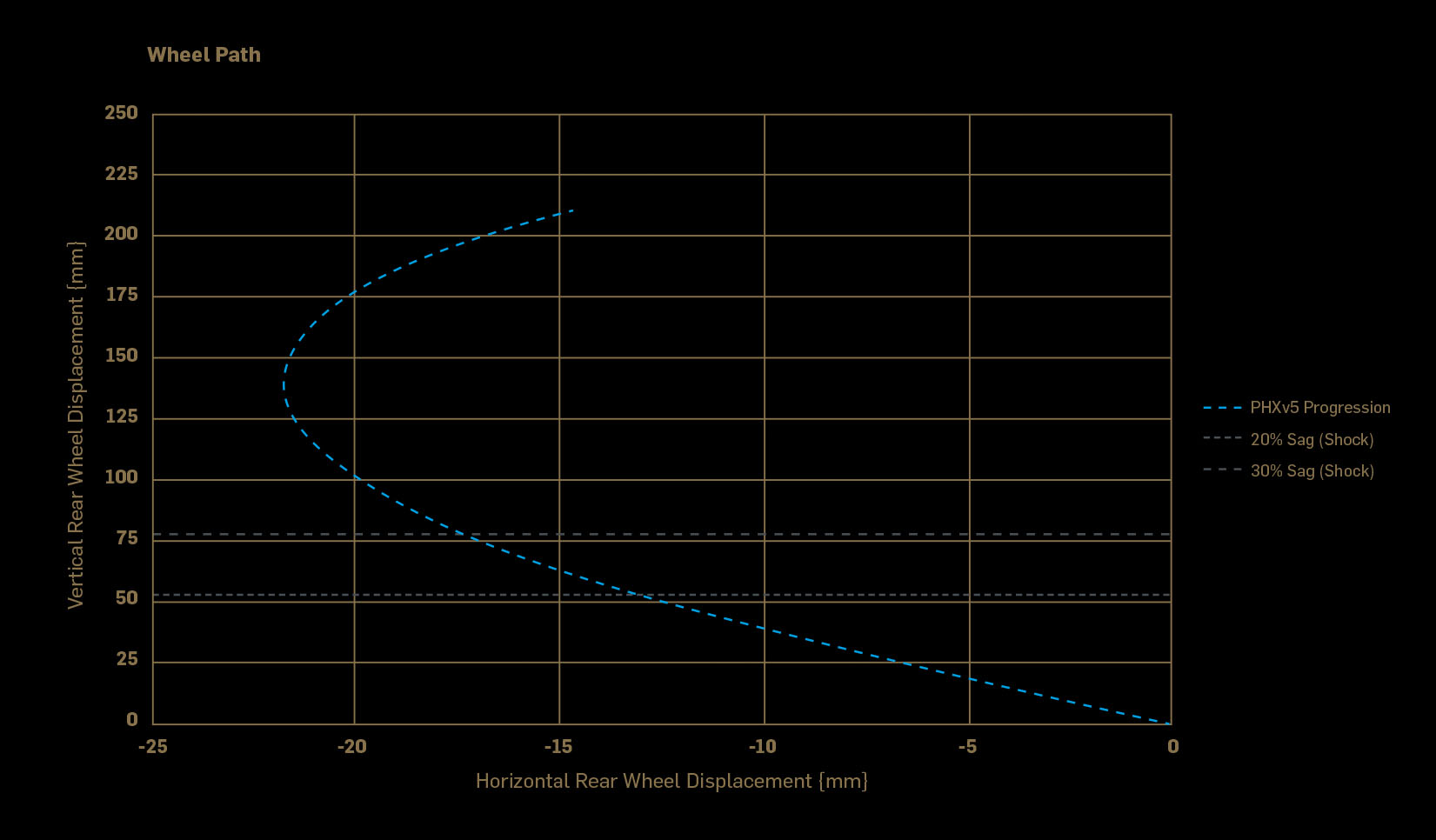
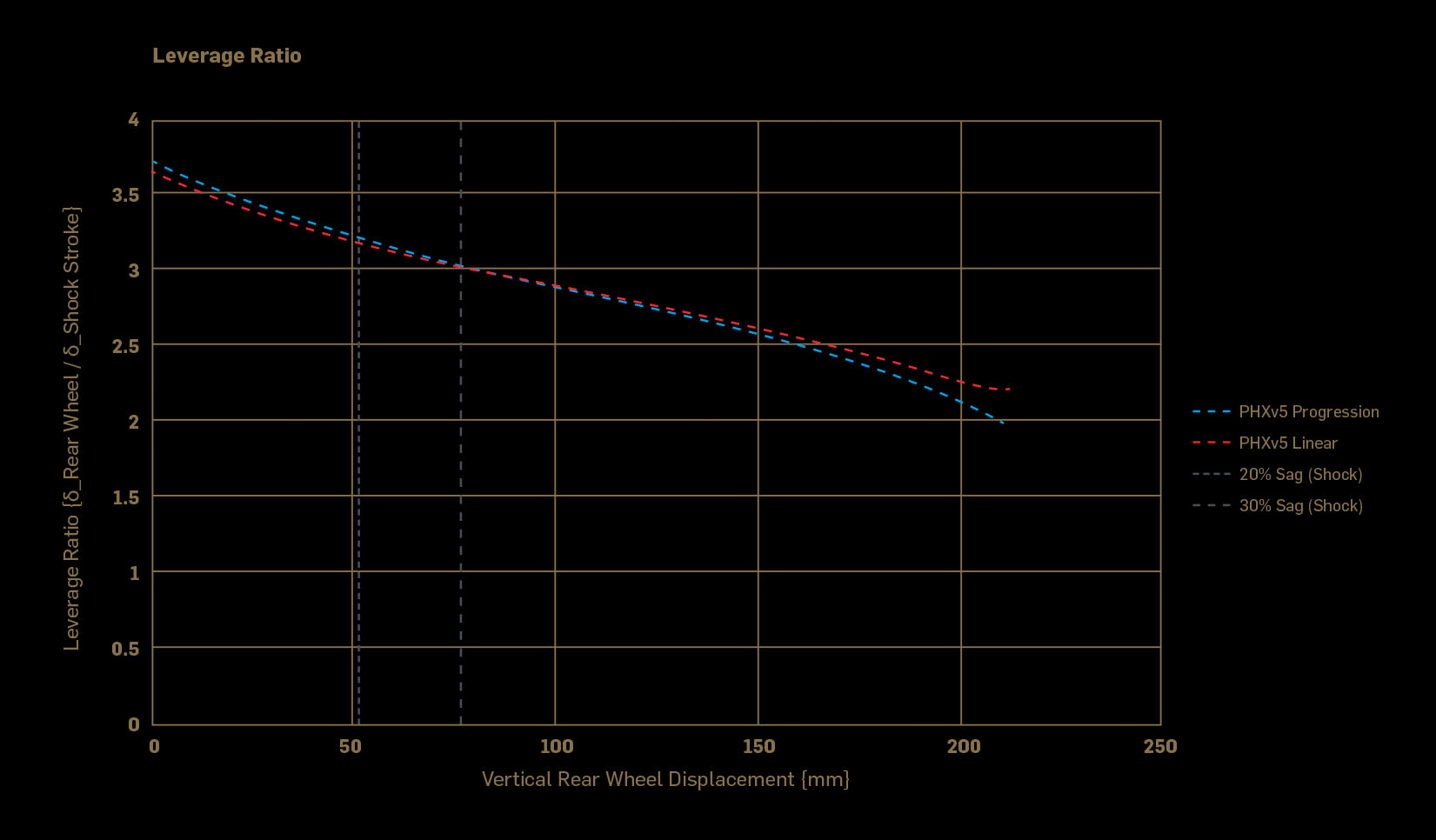
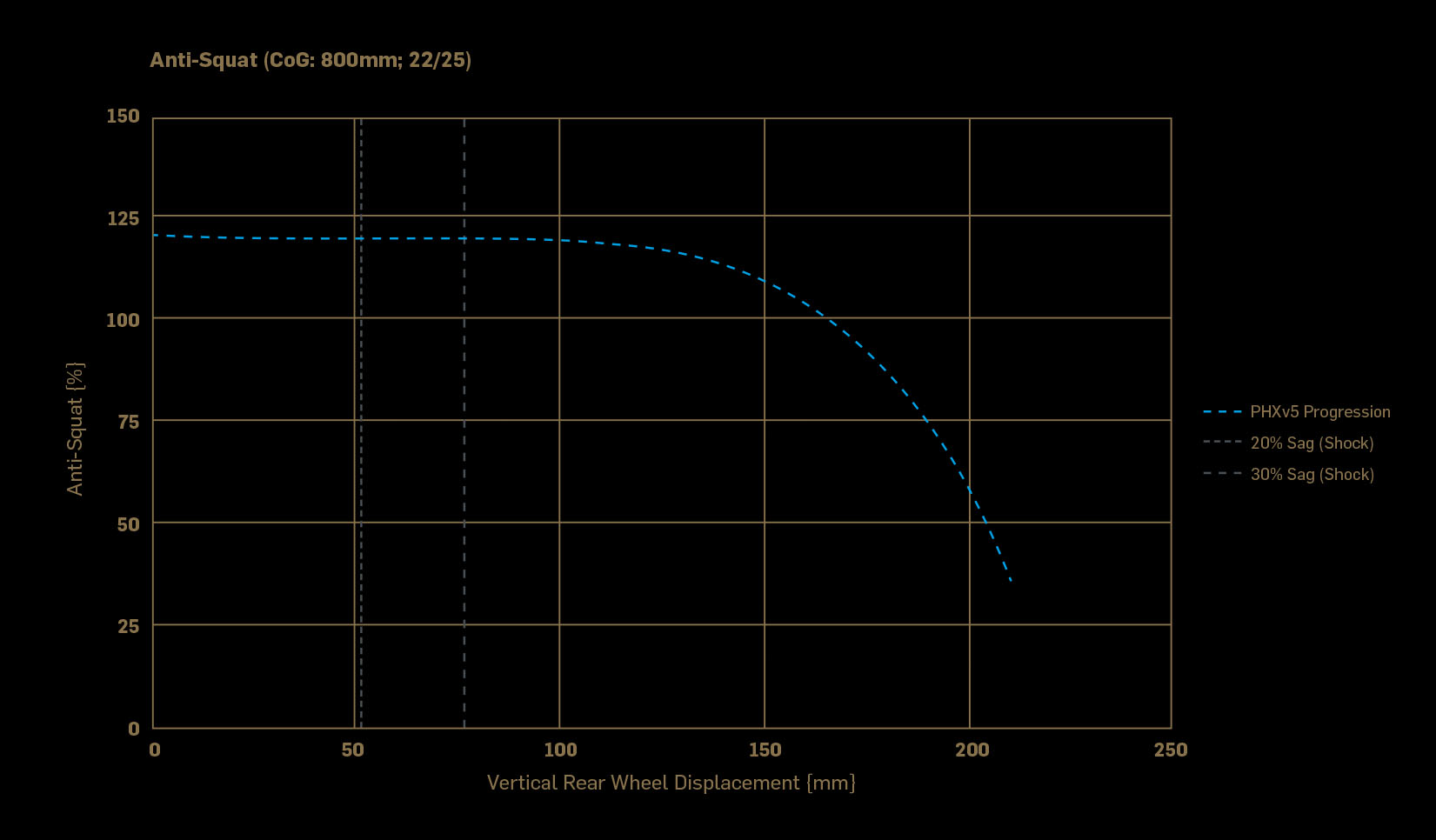

Fit & Geometry
Pivot offers the Phoenix in four sizes, labeled S1, S2, S3, and S4, which correspond to sizes Small through XL in more typical nomenclature. Reach figures start at 435 mm for the S1 frame and grow to 515 mm on the S4, with stops at 460 and 480 mm along the way. All four get a 62.5° headtube angle and 349 mm bottom bracket height in the low geometry position. Bumping the flip chip to the high setting steepens the headtube angle to 62.9°, raises the bottom bracket by 6 mm, and adds 5 mm to the reach.
All four sizes get the same 443 mm chainstays (low setting) and 106 mm headtube, which produces a consistent 635 mm stack height across the board.
Full geometry figures are as follows:


The Builds
Pivot offers two complete builds on the new Phoenix. The more affordable Ride GX build gets a SRAM GX DH drivetrain and Maven Bronze brakes, paired with the base versions of RockShox Boxxer and Vivid suspension and DT Swiss F1900 wheels; it retails for $6,899. Springing for the Pro Saint build gets you a Shimano Saint drivetrain and brakes, Fox 40 / Float X2 Factory suspension, and DT Swiss FR 560 wheels for $8,499.
If you’d prefer to build up your own Phoenix, a frame kit is also available for $4,799, including a Fox Float X2 Factory shock, Praxis DH-9 cranks, and the full idler pulley assembly and mini chain.
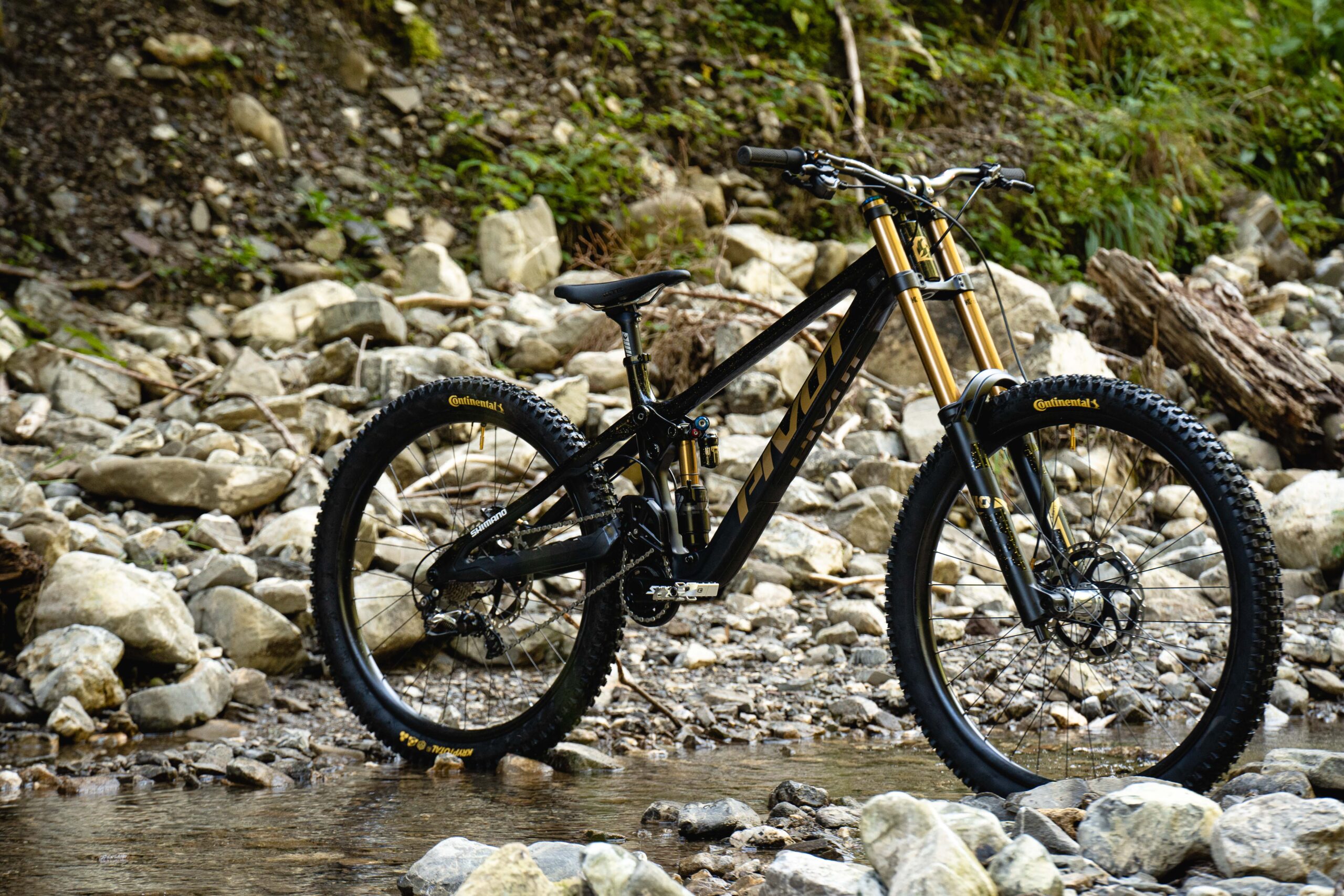
Full build highlights are as follows:
- Drivetrain: SRAM GX DH
- Brakes: SRAM Maven Bronze (220 mm front / 200 mm rear rotors)
- Fork: RockShox Boxxer (200 mm)
- Shock: RockShox Vivid
- Wheels: DT Swiss F1900
- Drivetrain: Shimano Saint
- Brakes: Shimano Saint (223 mm front / 203 mm rear Galfer Shark rotors)
- Fork: Fox 40 Factory Grip X2 (203 mm)
- Shock: Fox Float X2 Factory
- Wheels: DT Swiss FR 560
Some Questions / Things We’re Curious About
(1) First and foremost, how does the new Phoenix ride, and how does it stack up to the current crop of focused DH race bikes? What does its unique suspension layout actually feel like on trail?
(2) Will we see more six-bar and/or high-pivot bikes from Pivot in the future?
Bottom Line (For Now)
Downhill bikes are becoming ever more focused race machines, and Pivot makes it very clear that the new Phoenix continues that trend. What they’ve come up with looks awfully interesting — and pretty different from just about everything else out there — so we’re very curious to see how the new Phoenix performs.
